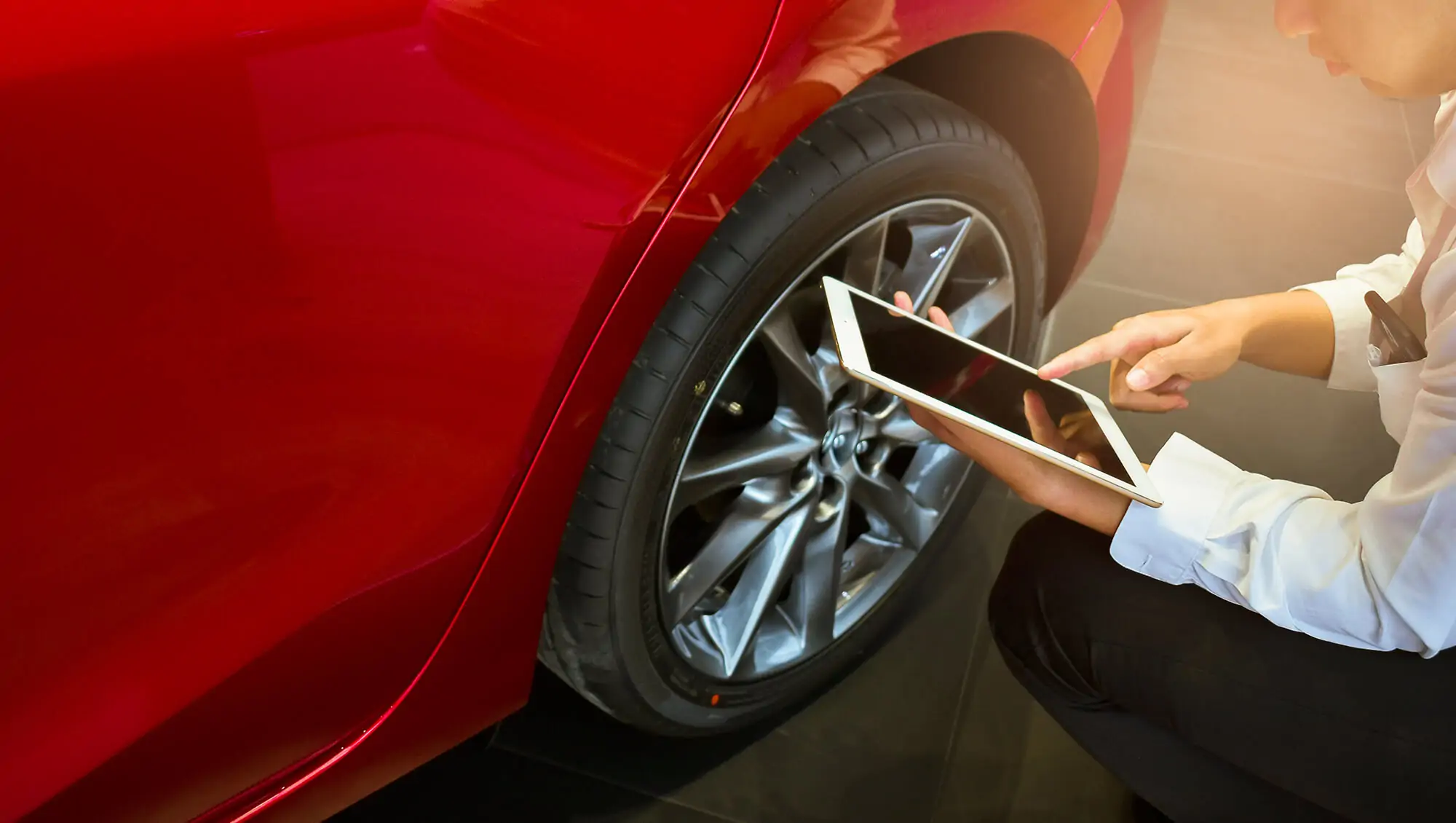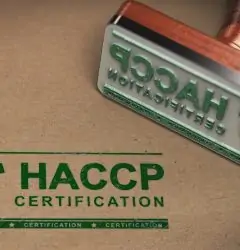08 Jun

Do I need FMCSA compliance? Does every trucking company come under FMCSA’s authority? Does the size of my trucks matter? How can I check my FMCSA status? What are FMCSA insurance requirements? Do I need a safety permit? What are the FMCSA regulations?
If you are a beginner who has a truckload of questions like these, this is the perfect place to bring you up to pace, even if you have just started out.
First, let’s get clear on what the FMCSA is and how its role is defined. The Federal Motor Carrier Safety Association (FMCSA) is a federal government agency under the US Department of Transportation (DOT).
It is responsible for regulating the trucking and commercial motor vehicle industry while providing safety oversight and guidelines. Their aim is to keep the nation’s roadways and motorways safe and to minimize crashes and related injuries, which involve large vehicles like trucks and buses.
Do I need FMCSA compliance?
There are certain factors that determine whether you need FMCSA compliance at all, even if you are a large trucking company. Once you register with FMCSA, you receive a DOT number. You are only subject to the FMCSA regulations if your interstate commercial vehicles fulfill one or more of the following criteria:
- Your vehicle weighs more than 10,000 lbs
- Your vehicle is designed to transport from 9 to 15 passengers including the driver and is used for compensation
- Your vehicle is designed to transport more than 14 passengers including the driver, and is not used for compensation
- Your vehicle is used to transport hazardous material and needs to be placarded under Hazardous Material Regulations (49 CFR Parts 100-177). This also includes intrastate HazMat carriers
Do I need a FMCSA Operating Authority?
It’s not necessary that if you need a DOT number, you need an Operating Authority as well. Some companies are required to also have interstate Operating Authority (MC number) as well as a DOT number but only if you fulfill certain conditions. You need an MC number in addition to a USDOT number only if you:
- Use your vehicle to transport passengers (for compensation) in interstate commerce
- Use your vehicle to transport commodities that are federally regulated and owned by others or arrange for their transport (for compensation) in interstate commerce
How do I register and get a USDOT number?
The DOT number serves as an identification number which helps in monitoring the safety and compliance information for trucking companies. If your vehicles fall under the criteria given for FMCSA compliance, then you have to register your brand new carriers online as a new applicant via the Unified Registration System (URS).
FMCSA Registration Process Steps
- Determine your registration needs and requirements, whether you need a USDOT number or if you need Operating Authority too. You also need to determine whether you need a HazMat safety permit.
- Fill out the forms and complete the application process: Apply online via URS if already have a DOT number, or via FMCSA legacy systems if you do.
- Determine your state registration requirements.
- Begin the New Entrant Safety Assurance Program
- Receive permanent USDOT registration
- Update and maintain your Operating Authority and USDOT number and information
Hence, when new interstate motor carriers register, they receive a USDOT number. These new registrations are known as New Entrants, which is a status lasting 18 months and includes an FMCSA compliance audit within the first year after operations start and then an FMCSA annual vehicle inspection every year that follows.
What are the FMCSA trucking regulations and safety guidelines?
Once you have registered with FMCSA and have your relevant information, you are bound to comply with all applicable safety regulations and FMCSA guidelines that concern:
- Drivers and their qualifications
- Testing for controlled substances and alcohol
- Accessories and parts necessary for the safe operation of commercial motor vehicles
- Inspection, maintenance, and repair
- Service hours
- Transportation of hazardous materials
These are all to make sure that you have a favorable FMCSA annual inspection and audit.
Drivers and their qualifications
A driver, under DOT regulations and FMCSA standards, is defined as a person who operates commercial motor vehicles. It is essential to have driver records or an active driver list file that is updated in real-time so that your schedules are organized and it is also useful when it is time for you to run MVRs. It is also extremely important to always have it updated and handy because it is one of the first documents which may be requested by a DOT safety investigator.
The list should have details like the driver’s name, his date of birth, the date when he was hired, his state license, and his license number.
Driver Application for employment: FMCSA requirements
Hiring a driver and qualifying him through the process is an essential part of FMCSA compliance. A good or bad hire can have long term effects on your productivity and the performance of your company. In other words, drivers who are qualified correctly have a much better performance than those who are not, and they are more likely to tend to safety regulations and get into fewer accidents.
This gets much worse and more costly when an auditor discovers your hiring process to be non-compliant while going through his FMCSA new entrant safety audit checklist on your company.
There are certain factors to consider when you are hiring a driver using an FMCSA compliance checklist for hiring purposes:
- The driver has submitted a complete DOT-compliant FMCSA driver application with any employment gaps fully explained
- Verifications for any and all prior employment in driving for the past three years
- MVR for every state that the candidate has lived in for the past three years
- A road test or candidate’s CDL copy whichever is applicable
- A DOT drug test prior to employment (Only if the position requires the applicant to be a CDL holder)
- Current medical certificate by a certified and registered medical examiner
It would be best if you take help from an FMCSA approved driver application sample to compare the applications when you are shortlisting the candidates who apply for employment. This would also make sure you get by easily when that auditor runs his FMCA audit checklist on your company. An ideal applicant would be one that has gone through FMCSA compliance training and knows the ins and out of compliance.
Maintaining DQFs
A Driver Qualification File (DQF) is a record-keeping requirement from FMCSA for all trucking companies hiring drivers. This includes all the details and information collected in the hiring process using the FMCSA checklist. DQFs also have some items that expire and need to be updated and renewed after every specified interval if you continue to employ that particular driver.
A DQF contains items such as:
- DOT FMCSA driver application
- Certificate of violations for the past three years
- MVR for the past three years
- Annual review of MVR for the past three years
- Road test
- Medical certificate for the past three years
- Copy of CDL (if required)
Other items such as drug test results are entered in another file called a driver investigation history file.
DOT Controlled Substance and Alcohol Testing
Alcohol and controlled substance testing program becomes crucial to your abiding by the FMCSA guidelines if you have the need for drivers who have or need a CDL. There is a long list of requirements and guidelines to be able to perform proper DOT testing for this but let’s discuss the basics for now.
There is only one thing that differentiates a DOT certified test and a regular non-DOT test. When you are conducting a DOT alcohol and controlled substance test, you are required to fill out and submit a federal chain of custody form.
There are stringent guidelines and rules for when the CDL driver be subjected to a DOT drug test. They can only be tested at certain specified times such as:
- Before hiring
- After an FMCSA recordable accident (meeting the FMCSA accident criteria)
- After returning to duty from a drug, substance and alcohol violation
- When there is reasonable doubt and suspicion of intoxication
- Via random testing, if there are two or more drivers in the vehicle
What is a random testing program?
A DOT random testing program is an unannounced set of controlled substance and alcohol tests performed on CDL drivers. The drivers who are subjected to these tests are chosen on the basis of random selection. Moreover, random testing can only be carried out if your CMV has two or more CDL drivers.
For DOT random testing, you can either join some DOT testing consortium and outsource your random testing by professionals, or you may manage the testing process yourself. If you decide to do it yourself, you will have to make sure you implement a DOT-compliant random selection and testing process.
Whatever way you choose, the ultimate responsibility of the process will lie with you so this means you have to be careful about abiding by the rules and regulations.
Service hours
Compliance with the FMCSA requirements for hours of service, which are recorded in driver logs, is very important. This is because driver logs are an essential part of the FMCSA logbook requirements. They can very often make or break an audit and subject you to strict action taken by the FMCSA if you haven’t been compliant.
The DOT places a lot of importance on service hours. This is because a large majority of accidents occur for the sole reason that the service hours have been violated and the drivers are overtired.
Duty Status
All CDL drivers must keep a record of duty status for every 24 hour period. There are certain methods for doing so and are specified in the FMCSA regulations. The service hours can be recorded electronically or on specially designed cards. For this, all vehicles must have access to an automatic onboard recorder (AOBR).
Duty status must be categorized and recorded in one of the following categories:
- Sleeper berth
- Off-duty
- On-duty not driving
- Driving
Driver logs and records must be retained by your company for the past six months at all times.
Exceptions to the rule
All drivers are not required to constantly maintain a log the entire time, but it’s best that you refer to the FMCSA regulations to determine whether any of your drivers qualify for the exception.
Commercial Motor Vehicles
Commercial motor vehicles or CMVs also have certain requirements that must be managed accordingly. The FMCSA expects you to inspect, maintain, repair all the CMVs under your control for more than 29 days and also keep records of all maintenance work done. This also includes vehicles that are borrowed or leased for more than the specified period.
Even if you decide to outsource the maintenance process, the onus still lies on you, even if you’re using leased vehicles.
Vehicle List
Maintaining a current up-to-date vehicle list is as crucial to FMCSA compliance as having an up-to-date driver list. A vehicle list should contain the following details:
- Type of vehicle
- Gross Vehicle Weight Rating (GVWR)
- License plate number
- Vehicle Identification number
DOT Annual Inspections
Each CMV must be inspected by a trained and certified inspector at least once every 12 months and proper documentation of these inspections must be maintained. If you do not have an inhouse inspection team, you may choose to outsource or you may even choose to conduct FMCSA inspector training for your own staff.
Similarly, other inspections have to be scheduled and recorded and this log should be readily available to hand over to an investigation officer if he so requests.
Inspection Reports
All CMV drivers must perform an inspection of their vehicle before the vehicle goes on a trip and also after the trip has been concluded. Both these inspections which include FMCSA pre-trip inspections and post-trip inspections have to be recorded in the form of written or electronic inspection reports.
These drivers have to make sure that they make a thorough inspection and check off all the items on the FMCSA pre-trip inspection checklist when they are inspecting their vehicles before the trip. Similarly, they have a checklist that they need to fill out for when they have completed the trip. These checklists have a number of items and they include the inspection of:
- Parking brake
- Service brakes
- Tires
- Steering mechanism
- Lights and reflectors
- Windshield wipers
- Horn
- Wheel rims
- Emergency equipment
- Rearview mirrors
- Coupling devices
These reports must be signed and retained for three months.
Accident Register
An accident register must be maintained which reports and records DOT recordable accidents. The accident information that should be recorded in these reports must contain the following information in order to fulfill the FMCSA accident reporting requirements:
- Date of the accident
- Location (City/Town and State where the accident occurred)
- Name of the driver
- Number of fatalities if any
- Number of injuries if any
- If any HazMat release was involved (other than any fuel spillage)
But what is a DOT recordable accident?
A DOT recordable accident is one that fulfills the following criteria:
- One or more fatality occurs
- One or more vehicles that are involved in the accident are towed from the scene
- One or more of the involved persons are transported to the hospital from the accident location
Insurance
By now you may be wondering about insurance and how to add an insurance policy to FMCSA registered vehicles. You will be responsible for certifying that you have adequate financial assurance and that you are able to cover any costs that may come your way associated with any injuries, damage of property, and environmental restoration caused by the discharge of environmentally harmful or toxic materials by your company.
You may choose to purchase an insurance plan from an insurance company, or surety bonds, or an authorization from FMCSA which lets you be self-insured. The minimum amount according to FMCSA requirements is $750,000, but it can be extended up to $5M based on your vehicle size, weight, and seating capacity.
FMCSA HazMat
Hazardous materials are those substances, according to the Secretary of Transportation, which pose an unreasonable risk to the health and safety of your resources and the environment when they’re transported.
There is a long list of FMCSA regulations about who is qualified to ship HazMat, where they can ship it, and how. For now, since we are covering the basics, let’s just stick to shipping papers and their requirements.
Shipping Papers
Companies that are shipping hazardous materials must be registered with the FMCSA and have appropriate documentation available on their vehicle as well as a safety permit. The HazMat shipping papers must contain:
- Identification number of the HazMat (from the HazMat table)
- Proper shipping name of the HazMat (from the HazMat table)
- Hazard class
- Quantity of HazMat
- Packing group
- Number of packages containing HazMat and package type
- Additional description requirements as necessary precaution
In addition to all these a procedure which is to be followed in case of emergencies must also be included in the shipping papers with each HazMat shipment.
Conclusion
As a beginner, we understand that diving into FMCSA compliance can be daunting and overwhelming. Hopefully, we have been able to outline the basics and give you some direction on what you need to focus on. Building and maintaining a good compliance program takes years of experience and time but starting off in the right manner can help you ensure a successful future.
If you would like to know how EcoDocs can help you be a step ahead of FMCSA compliance, you can request a demo or contact us. We have helped many companies, just like yours, to become more compliant, safer, and successful.




Ecodocs